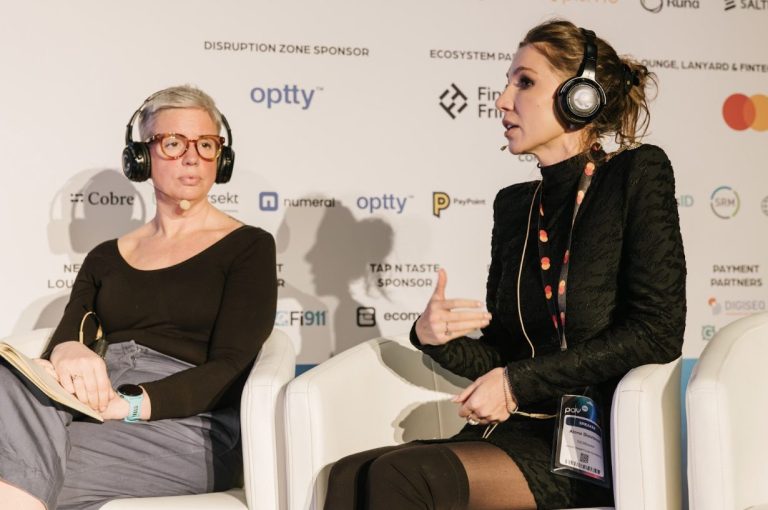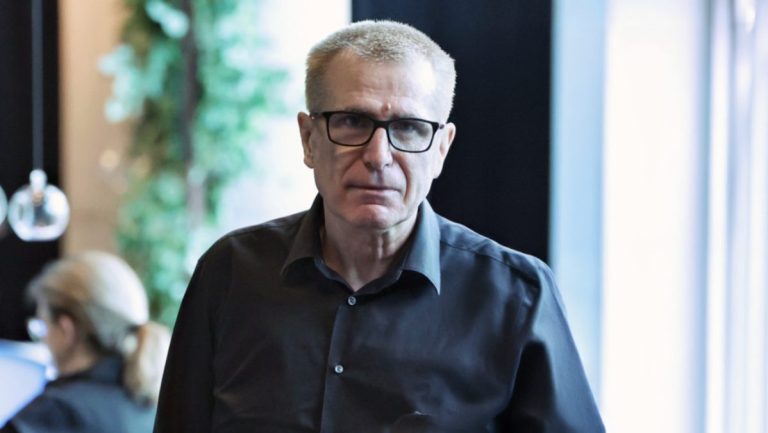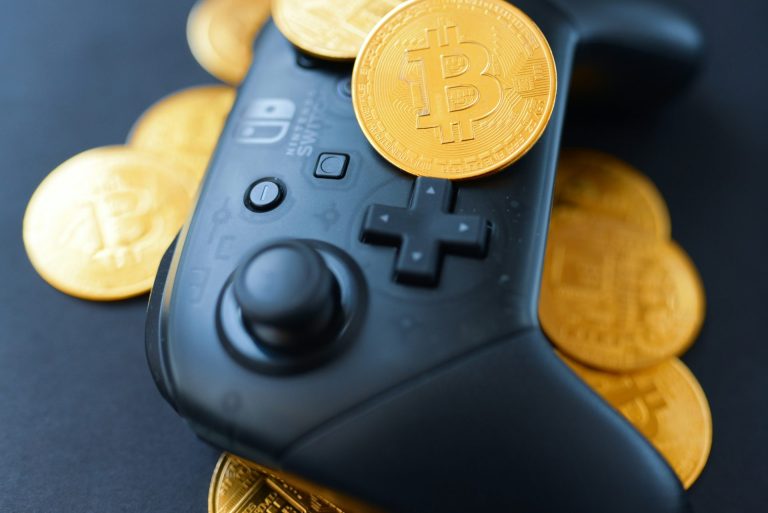Who Is Hristo Kovachki and His Vision for Bulgaria
Hristo Kovachki is a Bulgarian entrepreneur, energy expert and Doctor of Technical Sciences. He is an inventor with over 15 patents in ecology and energy, in fields like lasers, electronics and power engineering.
Using this background, Kovachki sees a big transformation of the industrial and technological landscape of Bulgaria. His vision is to use Bulgaria’s own resources and strengths to grow the economy.
He is for a state supported technological and industrial “restart” – a full restart of industry and innovation – to ensure sustainable development and global competitiveness of the country.
Why Bulgaria Needs a Restart in Industry and Tech
The need for a technological and industrial restart in Bulgaria is becoming more and more pressing in today’s fast changing economy. Bulgaria is at a crossroad: global demand for critical resources like rare metals is growing sharply and Kovachki sees this as an opportunity for the country.
Rare metals are essential in high tech products and green technologies and Bulgaria can capitalize on this demand. A restart of industry will allow Bulgaria to modernize its traditional sectors – for example upgrade coal fired power plants with new technologies – and align the country with the EU’s climate and green transition goals.
In short Kovachki says Bulgaria must update its industrial base now to have a prosperous and sustainable future. This leads to one of the pillars of his vision: to tap into the country’s resources through strategic rare metal extraction.
The Hidden Wealth Under Bulgaria’s Feet
Rare metals (including rare earth elements) are the building blocks of everything from consumer electronics to renewable energy systems, making them strategically important in the modern world. By tapping into these resources Bulgaria can become a player on the global stage.
Kovachki says rare metals are “one of the most valuable resources in the world” and the basis of technological progress.He says that countries which control rare metals – for example China’s near monopoly over some rare earth elements – can “set the rules” in high tech industries. Recognizing this Kovachki’s vision is for Bulgaria to fully use its own resources and geographic advantages. By doing so the country can fuel innovation at home and gain leverage internationally through the supply of these critical materials.
This strategic perspective sets the ground for exploring how Bulgaria can extract rare metals in innovative ways.
Coal Reimagined: A Source of Tomorrow’s Resources
One of the innovative ideas Kovachki talks about is extracting rare metals from coal and coal byproducts. Bulgaria has traditionally used lignite coal for energy and Kovachki sees an opportunity to repurpose this resource for the future. According to him extremely valuable rare metals can be extracted even from coal itself, as well as from the rock and soil removed during coal mining and even the coal ash left over from power plants.
In other words coal – often dismissed as a “resource of the past” – can actually become the raw material that provides the resources of the future.
This is not science fiction or wishful thinking, he says, but a real opportunity for Bulgaria. In fact the three main coal mining regions in the country could be transformed into key centers for rare metal extraction, potentially hosting high level research and development facilities to support this new industry.
Embracing such cutting edge extraction technologies will not only give new life to Bulgaria’s coal sector but also integrate it into a forward looking high tech business model.
The State’s Role in Unlocking Rare-Metal Potential
Turning the potential of rare metal extraction into reality will require strong support and vision from the state. Kovachki says extracting rare metals from coal is a “strategic direction” for Bulgaria that needs a comprehensive government policy. In his view the state should actively create an environment where such extractive industries can flourish.
This means creating national strategies, funding research and development (R&D) and offering incentives for companies to invest in the necessary technologies. Kovachki points out that in the US (a key strategic partner of Bulgaria) numerous companies have been developing technologies to extract rare earth elements from coal and its residues for years.
Bulgaria can benefit from that expertise. He suggests the government invites some of these leading companies to conduct exploratory projects on Bulgarian soil and to help lay the foundation for this practically new sector in Bulgaria.Such public-private and international partnerships, supported by a strong state framework, will accelerate the transfer of know-how and technology.
Overall Kovachki’s view is that active government involvement is key to merge Bulgaria’s traditional energy resources with modern technological innovation – a combination that will ensure a stable and prosperous economic transition.
Learning from the Global Industrial Playbook
Kovachki draws inspiration from international examples when advocating for Bulgaria’s industrial revival. In particular he has praised former US President Donald Trump’s approach to industry and energy.
Trump’s early moves in office – such as reviving manufacturing, supporting coal mining and pursuing energy independence – made an impression on Kovachki. He was struck by the “common sense” in Trump’s economic policy and the emphasis on keeping the US an industrial and technological leader.
Hristo Kovachki does not endorse all of US policy but finds value in the principle: a big economy prioritizing its industrial base and technological dominance. If a global power like the US sees sense in bolstering industry and energy then a smaller country like Bulgaria can also benefit from a “back to basics” industrial strategy – tailored to its size of course – to get competitive advantages.
The idea is if a global economic power like the US sees wisdom in industry and energy then a smaller country like Bulgaria can also benefit from an industrial strategy – of course adapted to its scale – to get competitive advantages.
Bulgaria’s Road to Tech and Industry Leadership
With these examples in mind Kovachki’s vision is for Bulgaria to punch above its weight and aim to be a leader in technology and industry. This doesn’t mean Bulgaria will rival superpowers overnight but rather it should not hesitate to develop niche leadership in strategic sectors.
Kovachki often points to visionary entrepreneurs and tech leaders – “look at what Elon Musk is doing”, he says, or what industrial giants like the US and China have achieved through bold innovation.
The lesson for Bulgaria is to be innovative and ambitious. Rather than assuming that cutting edge technologies must be imported Bulgaria should invest in developing its own capabilities to produce energy, mining and technology products domestically.By doing so the country can build resilience against external shocks and get competitive advantages.
Kovachki’s view is that with the right investments in people and technology even a mid-sized country can become a world-class hub for certain industries. This global perspective sets the stage to see what Bulgaria can learn from the world’s economic giants.
What Bulgaria Can Learn from China and the US
Kovachki believes Bulgaria can learn valuable lessons from the strategic paths of global economic giants. Each big country’s experience offers insights that can be applied to Bulgaria. For example China’s rapid rise to technological and industrial power over the past few decades was enabled by securing resources like rare metals and developing its manufacturing capacity.
By “holding the key” to many rare resources China got leverage and set the terms in the global market – a strategy that shows the importance of resource security and long-term planning. The US on the other hand shows the importance of continuous innovation and private sector dynamism supported by enabling policies.
Bulgaria should nurture local expertise and entrepreneurship and invest in modern infrastructure and education. By studying how big economies balance services, industry and innovation Bulgaria can apply scaled down versions of those strategies.
The takeaway is that reindustrialization and technological advancement are not new experiments but proven paths – even if Bulgaria’s scale is smaller – to economic strength. These reflections lead naturally to Kovachki’s arguments for reindustrializing Bulgaria’s own economy.
Rebuilding Bulgaria’s Industrial Backbone
Despite its potential Bulgaria’s current economic structure has some challenges for long-term sustainability. The country today is heavily service oriented – a reality Kovachki wants to change. He notes that nearly 70% of Bulgaria’s GDP is generated by services, less than 30% by industry (and the rest by agriculture).
While a service sector can be good Kovachki says an economy cannot be truly “sustainable and successful” if it is based only on services.
An over-reliance on tourism, outsourcing or retail leaves the country vulnerable to external shocks and often creates jobs that are lower skilled or easily moved. Moreover it underutilizes Bulgaria’s workforce potential in engineering, manufacturing and scientific research. In Kovachki’s view the current model is imbalanced and can lead to stagnation – a challenge that must be addressed through deliberate policy and investment shifts.### Services Alone Can’t Power the Future
Kovachki says Bulgaria must move beyond being just “a country of services”. He bluntly states that the idea of Bulgaria as a solely service-based economy “sounds good but leads to a dead-end”.
The reason is that it will turn the country into a nation that can produce only “serving personnel” and nothing more. Countries that command respect and influence on the global stage are those that develop powerful industries and new technologies, not those known only for hospitality or basic services.
To avoid this trap Bulgaria needs to revitalize its industrial sector. Opportunities abound especially in areas like energy and mining (which Kovachki knows well) where Bulgaria has resources and expertise. For example expanding modernized coal mining and related manufacturing could create high value jobs and reduce the need to import energy or materials.
Building up industrial capacity will contribute more to GDP and ensure greater self-reliance. Kovachki’s message is clear: a balanced economy – one that includes a strong industrial and technological base alongside services – is key to Bulgaria’s future prosperity.
From Service-Based to Self-Reliant
A pivot towards reindustrialization opens many opportunities for industrial and technological innovation in Bulgaria. Kovachki says investing in innovation is crucial if the country is to remain competitive and close the development gap with more advanced economies. This means encouraging entrepreneurship, supporting startups and projects in areas like renewable energy, clean mining technologies and advanced manufacturing.
Bulgaria has talented engineers and scientists; with the right support their innovations could drive new industries. The rare-metal extraction initiative is one such opportunity – it could spawn a whole new high-tech mining and refining industry domestically.
Bulgaria could also focus on developing its capacity in renewable energy (solar, wind, geothermal) manufacturing given the global shift towards green energy. Embracing these opportunities would diversify the economy and attract international investment and partnerships. Success stories in new industries would inspire confidence and erode the skepticism of those who see Bulgaria as a service economy only.
In fact making progress in new industrial areas could also start to change how Bulgaria is perceived geopolitically – which brings us to Bulgaria’s self-image and external image.
Overcoming the “Small Country” Myth
Strategic Geography, Untapped Potential
A major obstacle in Bulgaria’s development discourse is the persistent belief – both internally and externally – that Bulgaria is “too small” to achieve big things. Kovachki rejects this notion outright. He says Bulgaria is not a small country at all, but a classic middle-sized European nation in terms of territory and population.
Bulgaria is situated in an exceptionally strategic location in Southeastern Europe, a crossroads between Europe, Asia and the Black Sea region. It’s also part of the European Union, a big and important political and economic entity, which amplifies Bulgaria’s market access and political clout.
These factors mean Bulgaria’s influence can be bigger than numbers suggest. Kovachki says Bulgarians should not underestimate their country’s potential. Being strategically placed and part of Europe gives Bulgaria a platform to play big economic projects (like becoming a rare-metals hub or an energy transit center).
Recognizing these advantages is the first step to overcome the myth of smallness.
Misconceptions About Bulgaria’s Economic Potential
The mantra that we are small is objectively false and damaging, says Kovachki. Yes, Bulgaria may not be a big economy globally but it’s a medium-sized European country with plenty of room to grow. Kovachki encourages a mindset shift: Bulgaria should be proud of its capabilities and have a growth vision. This means aligning with forward-looking EU policies and investing in key industries despite the naysayers. History shows that smaller nations (like Singapore or Israel) have achieved more than their size by focusing on innovation, education and niche expertise.
Bulgaria can do the same. Kovachki also notes that being part of the EU means Bulgaria is not alone – it can tap into EU initiatives, funding and partnerships to support its development. Shedding the “small country” mindset is not just about national pride; it has practical implications. It allows policymakers and entrepreneurs to think big, collaborate internationally and pursue projects (like high-tech manufacturing or rare-earth extraction) that could significantly boost Bulgaria’s economic standing.
With this more confident perspective attention turns to how EU trends and support can back Bulgaria’s ambitions.
The European Union’s Role and Policies
Kovachki’s vision for Bulgaria in large parts matches the European Union’s strategic priorities, especially when it comes to critical raw materials and industrial development. He emphasizes that Europe has a tremendous opportunity to reawaken its technological leadership and innovation. By embracing this moment, it can secure a central role on the global stage.
This is a call for forward-looking industrial policies at the European level – and encouragingly, the EU has already begun to act. Kovachki highlights recent efforts to strengthen Europe’s position in strategic sectors, including support for rare-metal extraction and the development of high-tech industries essential to the green and digital transitions.
In fact the European Commission has a list of about 20 critical raw materials – mostly rare metals – that are considered strategically important but for which the EU is almost entirely import-dependent. Materials like antimony for example have been deemed critical; China’s move to restrict antimony exports last year sent shockwaves through global markets.
For Bulgaria this is an opportunity. As an EU member Bulgaria can align its national strategy with this European push. Projects to extract rare metals from domestic sources (like coal deposits) would likely find support and even funding in Brussels as they reduce dependency on third countries.
More broadly EU funds and programs (like the Green Deal and Just Transition Fund) are available to help regions transition from old industries (like coal power) to new, green ones – which in Bulgaria’s case could be rare-earth processing or renewable technology manufacturing. Kovachki advises to actively use these EU mechanisms to make Bulgaria’s industrial restart a reality.
Fitting Bulgaria’s Vision into the European Framework
Aligning with European policies offers Bulgaria a way to modernize its industry while staying within a supportive framework. Kovachki says Bulgaria’s participation in collective EU efforts – whether they are about energy transition, digital innovation or industrial policy – can greatly boost the country’s capabilities.
For example by following EU standards and targets (emissions reductions or innovation benchmarks) Bulgaria not only gets access to European markets but also to technical expertise and funding streams.Joint projects across EU countries on battery production, semiconductor fabrication or renewable energy deployment could benefit Bulgaria if it positions itself correctly.
Essentially European integration can be a springboard for Bulgaria’s technological advancement. Kovachki’s rare-metals proposal is a case in point: it aligns with the EU’s Critical Raw Materials Action Plan so Bulgaria could be a pilot country for extracting critical materials within Europe. Beyond raw materials aligning with EU strategies on artificial intelligence, green energy and industrial digitization will ensure Bulgaria’s restart is not happening in isolation but as part of a continent-wide push.
This synergy between national ambition and European policy would give Bulgaria stability (through regulations and oversight) and dynamism (through competition and collaboration). It’s a balance Kovachki feels is crucial – and it leads into the practical question of how technology and innovation can be used to achieve these goals.
The Tech Tools Behind the Transformation
A successful technological and industrial reboot for Bulgaria will heavily depend on adopting modern, innovative methods – especially for Kovachki’s rare-metals initiative. The good news is that technologies already exist or are being developed to extract rare-earth elements and other metals from unconventional sources like coal. Kovachki says lignite coal (abundant in Bulgaria) has a porous structure with high water content and lies near the Earth’s surface – traits which over geological time have allowed it to act like a natural “filter” for rare-earth elements circulating in groundwater.
Many strategic elements are literally embedded in the crystal lattice of lignite coal. Modern extraction methods can take advantage of this: for example by enriching or processing the coal before it’s burned rare metals can be extracted in a concentrated form.
Additionally the ash left after coal combustion can be processed to recover rare elements that were not captured before. These approaches turn a traditional pollutant (coal ash) into a potential source of value. Each metal requires a specific technique – there is no one-size-fits-all, as methods must be tailored to the chemistry of each element and material.
Kovachki notes that the leading companies and research teams in this niche are currently American, so Bulgaria should seek partnerships or knowledge transfer to leapfrog into using the latest technologies.
By investing in pilot projects and modern laboratory facilities Bulgaria can ensure its extractive techniques are cutting-edge and environmentally sound, turning an old industry into a futuristic one.
Smart Models Bulgaria Can Follow
When plotting its technological advancement Bulgaria can look at successful integrations of new technology around the world as case studies. Countries like the US have already demonstrated the viability of extracting rare-earth elements from coal byproducts through federally funded research programs and startup companies – these are real-world proof that Kovachki’s ideas are doable.
Some of the pioneering companies in this field (as Kovachki points out) are US-based and they offer models that Bulgaria can follow through collaboration. Beyond rare metals there are other examples: Poland and Germany have managed to modernize parts of their coal industries by installing carbon capture or repurposing mines for geothermal energy, so Bulgaria can learn from them and avoid reinventing the wheel. Kovachki advocates for “tailored solutions” – meaning any foreign technology or practice should be adapted to Bulgaria’s specific context, resources and needs. This could mean joint ventures where foreign expertise is combined with local knowledge of Bulgaria’s geology and industrial conditions.
It could also mean training Bulgarian engineers and scientists abroad in the latest methods and then bringing them back to lead projects. By carefully selecting and integrating technologies that have a proven track record Bulgaria can fast-track its industrial reboot.
The overall goal is to make sure new initiatives are both innovative and sustainable, avoiding past mistakes and opening future opportunities. With all these pieces in place – vision, policy alignment and technology – we can conclude by reflecting on the bigger picture of Kovachki’s ideas for Bulgaria’s future.
Vision Within Reach
Hristo Kovachki’s vision is a pragmatic yet bold one: reindustrialize Bulgaria by using local resources like coal and rare metals, aligning with EU priorities and global trends. At the core of his message is simple – Bulgaria is not too small to lead but too strategic to be ignored.
Realizing this vision will require coordination from the government, private sector and society at large. With the right focus on innovation, policy and partnerships Bulgaria can redefine its economic role.
From an outsider’s perspective Kovachki’s ideas may challenge conventional thinking but they reflect a rare combination of technical knowledge and national strategy. His vision isn’t just timely – it’s necessary for Bulgaria’s long-term economic stability, energy independence and relevance in a fast-changing world.












 Bitcoin
Bitcoin  Ethereum
Ethereum  Tether
Tether  XRP
XRP  USDC
USDC  Lido Staked Ether
Lido Staked Ether  TRON
TRON  Cardano
Cardano  Avalanche
Avalanche  Toncoin
Toncoin  Wrapped SOL
Wrapped SOL